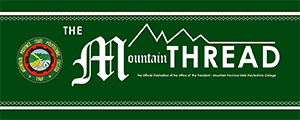GERMPLASM COLLECTION, IDENTIFICATION AND CHARACTERIZATION OF RICE
IN MOUNTAIN PROVINCE
Melanie S. Subilla
ABSTRACT
The study was conducted in Mountain Province aimed to collect, identify and characterize the rice varieties that are being propagated in the province for further native rice improvement studies. Purposive and quota sampling were used as research method to determine the study sites and the possible source of rice varieties. On the other hand, the minimum descriptor for wild and cultivated rice from Bioversity International that is adopted by the International Rice Research Institute was used in characterizing the collected rice varieties.
There were fifty seven (57) rice varieties identified, and among these, 89.47 % are considered native in the province while others are introduced. Common names of the identified rice were determined wherein most were named based from morphological structure. The identified rice varieties are mostly under “ginorot” cultivars that are propagated in a sustained pond field in rice terraces. Dominant of the collections were from semi-temperate locations but of short panicles.
Morphological characterizations were determined in every rice variety collected such as color, size and shape of the panicles, awn, lemma and palea, grain and caryopsis. Identified native rice varieties mostly have short panicles and are mostly awned. The lemma and palea as well as the grains of native rice varieties are mostly brown in color as compared to the introduced rice varieties while the color of the caryopsis is white.
Therefore, the result of the study should be further subjected to propagation trials especially those identified rice varieties of unique uses and those native rice varieties having longer and heavier grains having potentials of helping solve food scarcity.





















